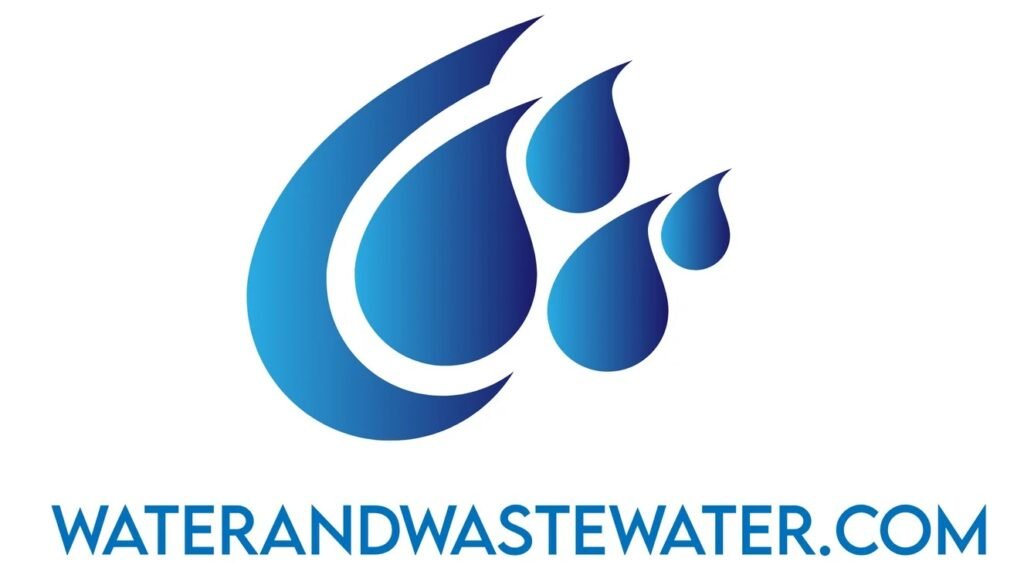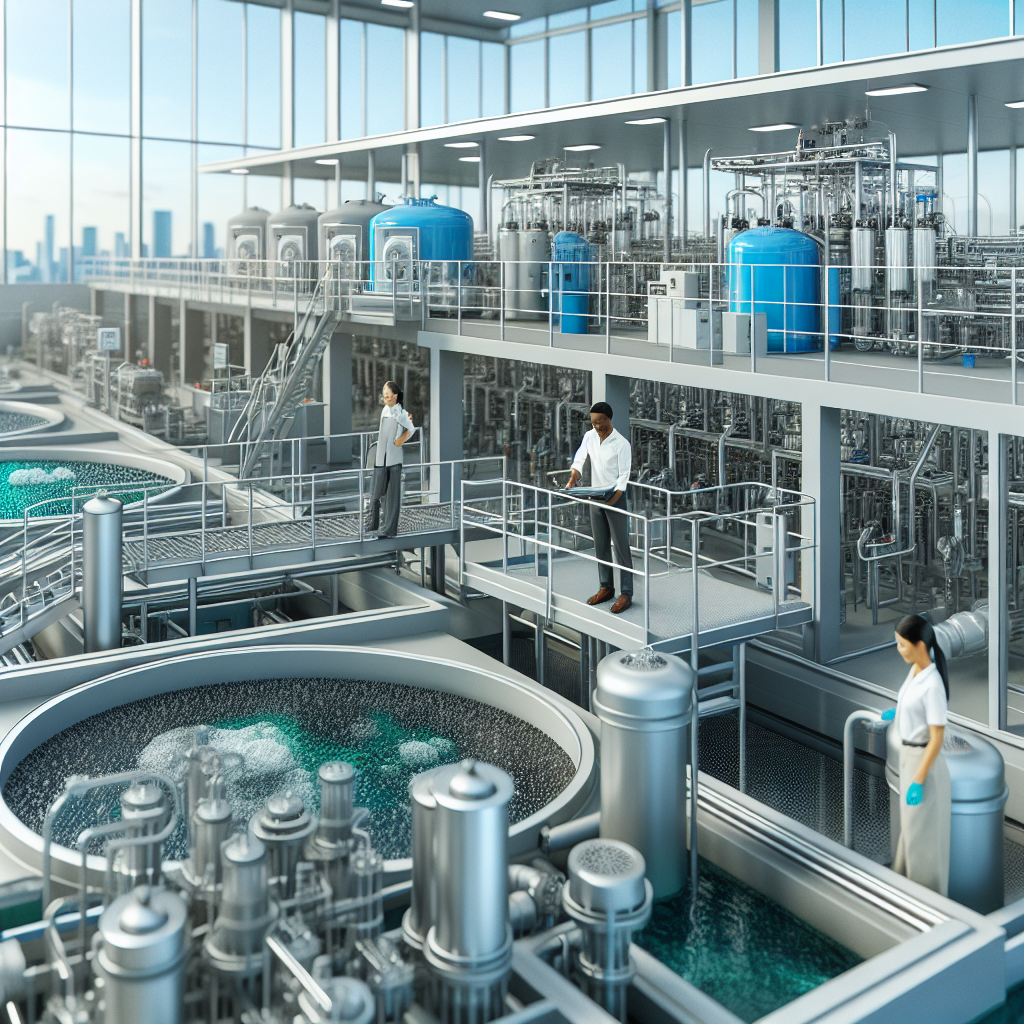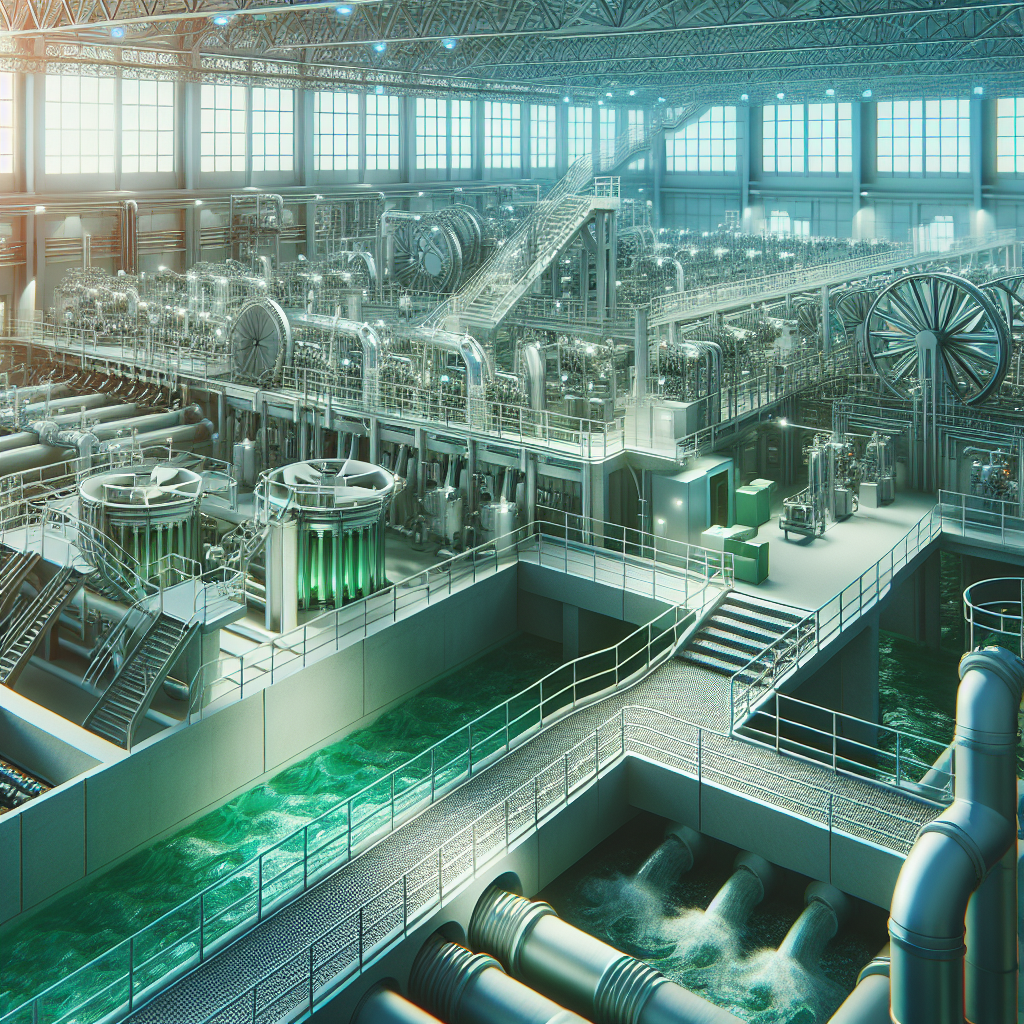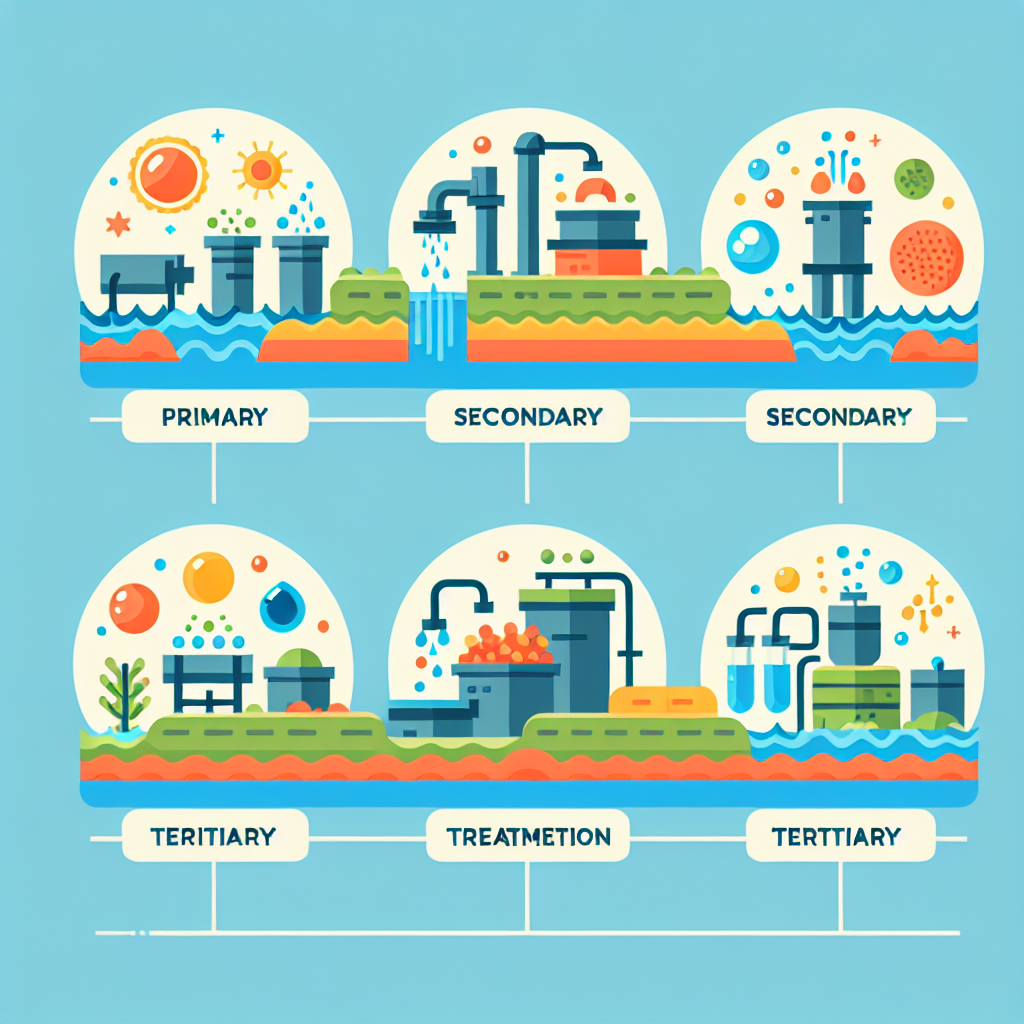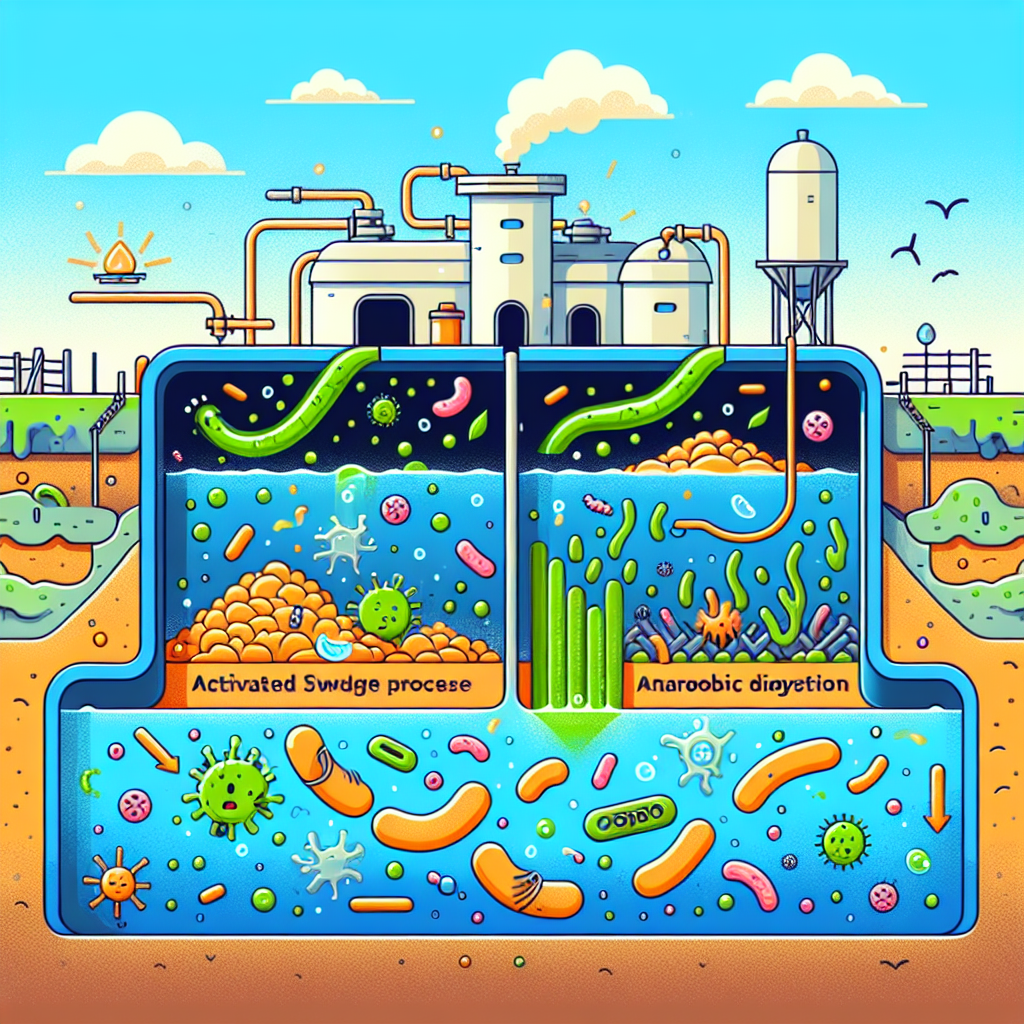Complete Guide to Modern Wastewater Treatment Methods
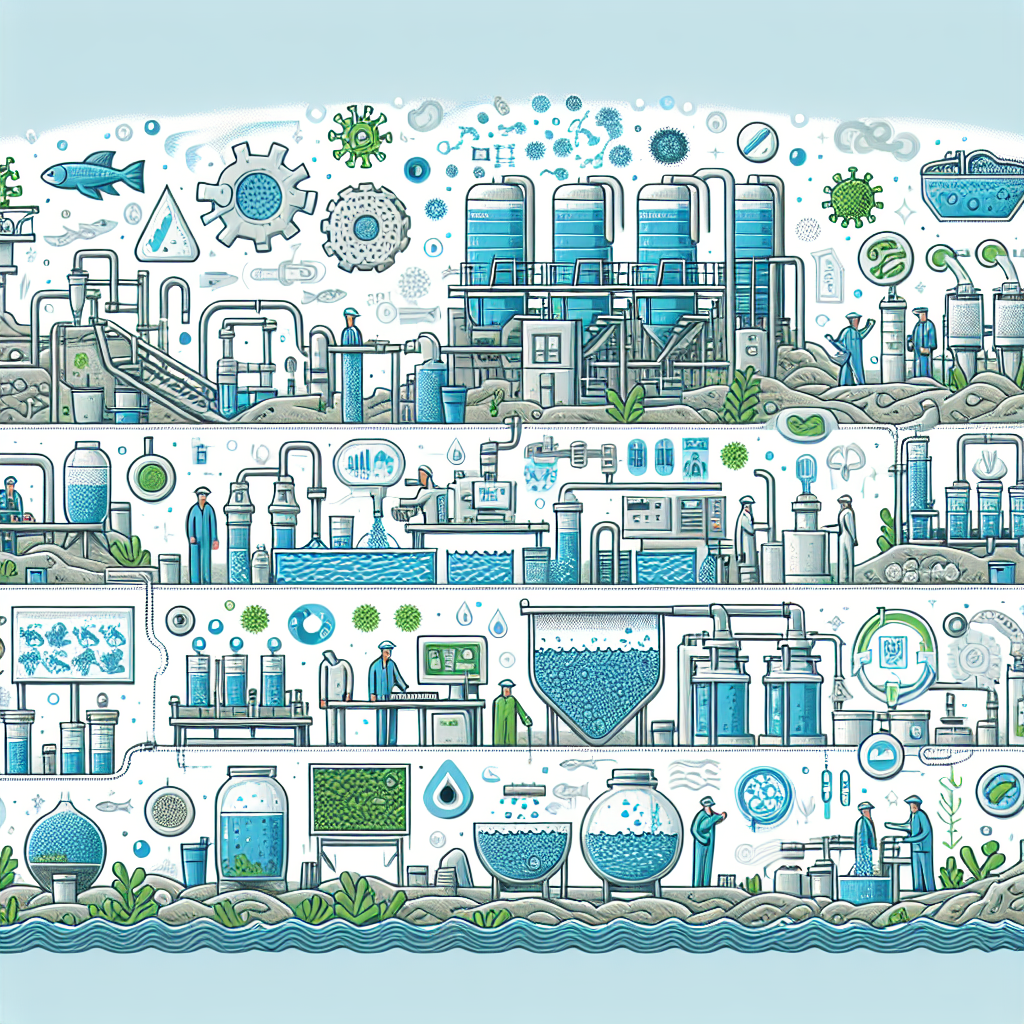
Complete Guide to Modern Wastewater Treatment Methods
Introduction
Welcome to the fascinating world of treatment of wastewater, where science meets sustainability and innovation dances with necessity! If you’ve ever wondered what happens to the water that swirls down your drain after a particularly epic bubble bath or that last-minute spaghetti dinner, you’re in for a treat. Spoiler alert: it’s more complex than a plot twist in a telenovela!
As urban populations grow and industries churn out more waste than a toddler at a birthday party, effective wastewater management has become crucial. From municipal facilities to industrial giants, everyone is looking for ways to ensure that our precious water resources are treated, recycled, and reused rather than just tossed away like yesterday’s leftovers.
In this guide, we’ll dive deep into the various methods of sewage treatment think of it as your ultimate cheat sheet for all things related to water purification. We’ll explore everything from the basics of primary treatment to advanced techniques like membrane bioreactor systems and anaerobic digestion. And yes, we’ll even touch on the environmental impact of wastewater treatment because who doesn’t love a good plot twist?
But wait there’s more! We’ll also cover sustainable solutions that not only clean our water but also help us reclaim it for future use. Imagine a world where every drop counts a world where wastewater recycling and innovative technologies are at the forefront of our efforts to combat water pollution. Sounds dreamy, right?
Key Takeaway: Understanding the treatment of wastewater is essential not just for engineers and municipalities but for anyone who cares about our planet’s health. Join us as we unravel the complexities and unveil solutions that could change how we view wastewater forever!
Understanding Wastewater Treatment
Welcome to the world of wastewater treatment, where we turn the yucky into the usable! But before we dive deep into the nitty-gritty, let’s start with the basics.
- Definition of Wastewater and Its Sources: Wastewater is essentially any water that has been used and is no longer suitable for its original purpose. Think of it as water that has been through a lot be it from our homes (domestic sewage), industries (industrial wastewater), or stormwater runoff. It’s like a water party gone wrong!
- Importance of Treatment of Wastewater: Why bother treating wastewater? Well, untreated wastewater can be a cocktail of pollutants, pathogens, and nutrients that can wreak havoc on our ecosystems and public health. The treatment of wastewater is crucial for protecting water quality, ensuring safe effluent discharge, and promoting sustainable practices in our communities.
- Overview of Wastewater Management Principles: Effective wastewater management isn’t just about cleaning up; it’s about doing so sustainably. This includes ensuring compliance with effluent discharge regulations, utilizing advanced technologies for nutrient removal in wastewater, and integrating strategies like greywater recycling systems to minimize waste.
Did you know? According to recent studies, effective treatment of wastewater can reduce water pollution by up to 90%, significantly improving the health of aquatic ecosystems!
The journey from sewage to clean water involves various stages: primary, secondary, and tertiary treatment methods. Each step plays a vital role in ensuring that what goes back into our rivers and oceans is not just safe but also sustainable.
This process is akin to a multi-step skincare routine just as we wouldn’t want to slather on makeup without cleansing first, we certainly don’t want to discharge untreated sewage back into nature!
In conclusion, understanding the treatment of wastewater isn’t just for engineers or municipal workers; it’s essential knowledge for anyone who wants to contribute to a cleaner planet. So next time you flush or wash your hands, remember there’s a whole system working behind the scenes to keep our water clean!
Types of Wastewater Treatment Methods
When it comes to the treatment of wastewater, there are several methods that municipalities and industries can employ to ensure that our water remains clean and safe. Think of these methods as the superheroes of the water world, each with its own unique powers to combat pollution! Let’s dive into the main types:
-
Primary Treatment of Wastewater
This is like giving wastewater a quick rinse before it goes for a deep clean. During primary treatment, large solids are removed through processes like screening and sedimentation. This step is crucial for reducing the load on subsequent treatment stages.
-
Secondary Treatment of Wastewater
Here’s where things get serious! Secondary treatment uses biological processes to remove dissolved and suspended organic matter. This method often involves the activated sludge process, which utilizes microorganisms to consume pollutants. Think of it as a buffet for bacteria!
-
Tertiary Treatment of Wastewater
The final touch! Tertiary treatment focuses on polishing the effluent further by removing remaining contaminants, including nutrients like nitrogen and phosphorus. Advanced techniques such as membrane bioreactor systems or chemical treatments come into play here, ensuring top-notch water quality before discharge.
Key Takeaway: Each stage in the treatment of wastewater plays a pivotal role in achieving high standards of water quality improvement. Skipping steps can lead to environmental issues down the line!
Biological Wastewater Treatment Techniques
When it comes to the treatment of wastewater, biological methods are like the superheroes of the wastewater world, saving us from pollution one microbe at a time. These techniques harness the power of living organisms to break down harmful substances in sewage, making them essential in both municipal wastewater treatment and industrial wastewater treatment.
Activated Sludge Process
The activated sludge process is akin to a bustling city where microorganisms thrive. In this method, aerated tanks are filled with a mixture of sewage and tiny bacteria. As air is pumped into the tank, these bacteria go to town on the organic matter, breaking it down and converting it into harmless byproducts. This process not only treats wastewater but also helps with nutrient removal in wastewater, making it a two-for-one deal!
Anaerobic Digestion in Wastewater Treatment
If you thought anaerobic digestion was just a fancy term for letting things rot, think again! This method involves breaking down organic matter without oxygen perfect for those smelly sludge heaps we all love to avoid. The end result? Biogas that can be used as renewable energy! It’s like turning trash into treasure while simultaneously tackling sludge management.
Membrane Bioreactor Systems
Now let’s talk about membrane bioreactor systems (MBRs) the high-tech solution to wastewater woes. These systems combine biological treatment with membrane filtration to produce high-quality effluent that meets stringent discharge regulations. Think of MBRs as the VIP lounge of wastewater treatment; they filter out impurities while keeping the good stuff intact. Plus, they’re energy-efficient and perfect for decentralized wastewater systems!
In summary, biological wastewater treatment techniques are not just effective; they’re essential for modern sewage disposal methods. Whether through the bustling activity of activated sludge or the innovative approach of MBRs, these methods contribute significantly to our efforts in water pollution control strategies.
So next time you flush or wash your hands, remember: there’s an army of tiny heroes working behind the scenes to keep our water clean!
Chemical and Physical Wastewater Treatment Methods
When it comes to the treatment of wastewater, chemical and physical methods play a crucial role in ensuring that our water is not just clean, but also safe for the environment. Think of these methods as the superhero sidekicks to biological treatment techniques, swooping in to tackle tough contaminants that bacteria might not handle alone.
Chemical Coagulation and Flocculation
This dynamic duo is like a dance party for particles! In coagulation, chemicals (usually aluminum sulfate or ferric chloride) are added to wastewater to destabilize suspended solids. Once these solids are flocculated, they clump together into larger aggregates that can be easily removed. This process is essential for effective sewage treatment, as it significantly reduces turbidity and prepares the water for further purification.
Advanced Oxidation Processes (AOP)
Imagine AOPs as the ninjas of wastewater treatment swift and stealthy! These processes use powerful oxidants like ozone or hydrogen peroxide combined with UV light to break down complex organic pollutants into harmless byproducts. AOPs are particularly effective in industrial wastewater treatment, where stubborn contaminants lurk around every corner. They can even tackle those pesky endocrine-disrupting compounds that traditional methods struggle with.
Sedimentation and Filtration Techniques
No superhero team is complete without some classic strategies! Sedimentation relies on gravity to settle out heavier solids from liquids think of it as letting your muddy water sit until the dirt sinks to the bottom. Filtration then steps in, acting like a bouncer at an exclusive club, allowing only clean water to pass through while trapping remaining particles. Together, these techniques form a solid foundation for effective effluent treatment.
Did you know? Combining chemical treatments with physical processes can enhance overall water quality improvement and compliance with effluent discharge regulations!
In summary, chemical and physical wastewater treatment methods are essential players in the quest for cleaner water. By employing techniques like coagulation, AOPs, sedimentation, and filtration, we can significantly improve water quality while also paving the way for sustainable wastewater solutions. So next time you flush or drain your sink, remember all the hard work happening behind the scenes!
Sustainable Wastewater Solutions and Innovations
In the quest for cleaner water and a healthier planet, the treatment of wastewater has taken on a new, eco-friendly twist. Traditional methods are getting a makeover as innovative solutions emerge, proving that sustainability and efficiency can go hand in hand. Let’s dive into some cutting-edge sustainable wastewater solutions that are reshaping the landscape of wastewater management.
-
Zero Liquid Discharge Systems (ZLD)
Imagine a world where no drop of water goes to waste. ZLD systems do just that by ensuring that all wastewater is treated and reused, leaving behind zero liquid waste. This method is particularly beneficial for industries where water is precious, like textiles or pharmaceuticals.
-
Constructed Wetlands for Waste Treatment
Who knew that nature could be such a great engineer? Constructed wetlands use natural processes involving wetland vegetation, soils, and associated microbial life to treat wastewater. These systems not only purify the water but also provide habitats for wildlife, making them a win-win for both humans and nature.
-
Phytoremediation in Water Cleanup Efforts
This plant-powered approach uses specific plants to absorb or degrade pollutants in wastewater. Think of it as nature’s very own filtration system! It’s particularly effective for treating heavy metals and nutrients, showcasing how green solutions can tackle tough problems.
Key Takeaway: Sustainable innovations in wastewater treatment not only improve the quality of effluent but also enhance biodiversity and reduce environmental impacts. Embracing these technologies can lead to significant advancements in municipal and industrial wastewater treatment processes.
The future of sewage treatment lies in our ability to integrate these sustainable practices into existing infrastructures. By adopting advanced methods like ZLD systems or harnessing the power of constructed wetlands, municipalities can significantly enhance their wastewater management strategies while adhering to stringent effluent discharge regulations.
As we continue to innovate within this field, it’s crucial for engineers and operators to stay informed about these advancements. The shift towards sustainable solutions isn’t just beneficial; it’s necessary for preserving our precious water resources for generations to come!
Wastewater Recycling and Reclamation Techniques
Wastewater recycling and reclamation techniques are the superheroes of modern wastewater treatment, swooping in to save the day (and our precious water resources). In an era where every drop counts, these methods not only help in treatment of wastewater but also ensure that we’re making the most out of every gallon. Let’s dive into some of the most effective techniques!
-
Greywater Recycling Systems
Greywater, which is basically the water that comes from sinks, showers, and washing machines (not to be confused with the stuff that swirls down your toilet), can be recycled for non-potable uses like irrigation or toilet flushing. These systems can significantly reduce the demand on municipal wastewater treatment plants and lower water bills. Think of it as giving a second life to your everyday wash water!
-
Decentralized Wastewater Systems
For those who love their space and perhaps want to avoid the hustle and bustle of central treatment facilities decentralized systems are a game-changer. These systems treat wastewater on-site, reducing transportation costs and environmental impact. They’re particularly useful in rural areas or where infrastructure is lacking. It’s like having your own mini-wastewater treatment plant right in your backyard!
-
Constructed Wetlands
Imagine a beautiful garden that doubles as a wastewater treatment facility. Constructed wetlands use natural processes involving wetland vegetation, soils, and associated microbial assemblages to improve water quality. They’re not just efficient; they also provide habitat for wildlife! Talk about multitasking.
-
Membrane Bioreactor Systems
This advanced technology combines biological treatment with membrane filtration, allowing for high-quality effluent suitable for reuse in irrigation or even industrial processes. Membrane bioreactors are like the Swiss Army knife of wastewater treatment versatile and effective! Plus, they help in nutrient removal in wastewater, ensuring that what goes back into nature is cleaner than ever.
-
Anaerobic Digestion
This method breaks down organic matter without oxygen, producing biogas that can be used as a renewable energy source. Not only does this technique reduce sludge volume (hello, sludge management!), but it also contributes to energy-efficient wastewater processes. It’s like turning yesterday’s leftovers into today’s energy!
Key Takeaway: Implementing these innovative techniques not only enhances the treatment of wastewater but also supports sustainable practices and resource conservation.
The future is bright for wastewater recycling and reclamation! By embracing these methods, municipalities can significantly improve their water quality while reducing environmental impacts truly a win-win situation.
